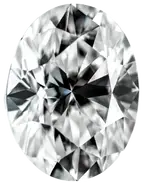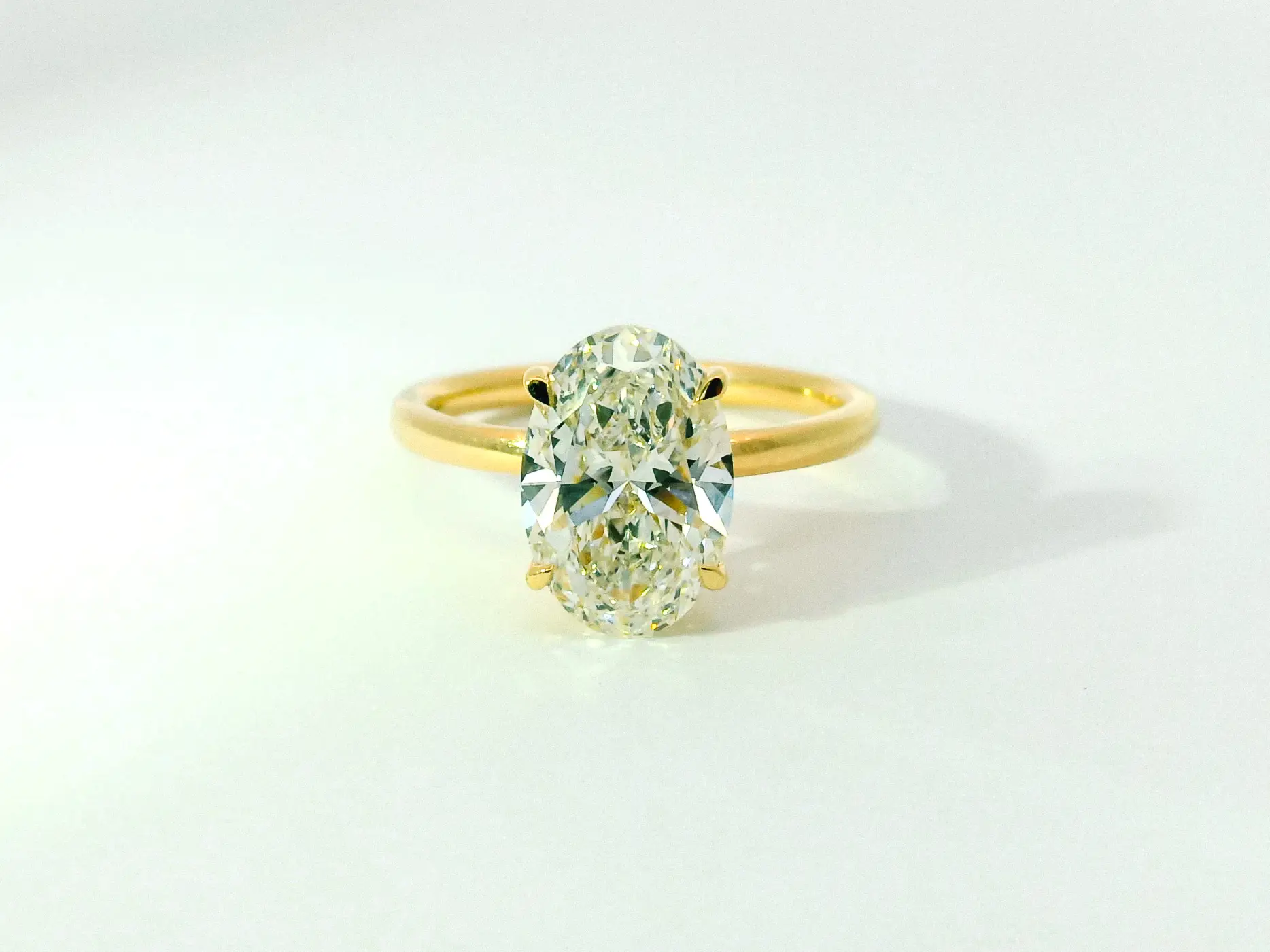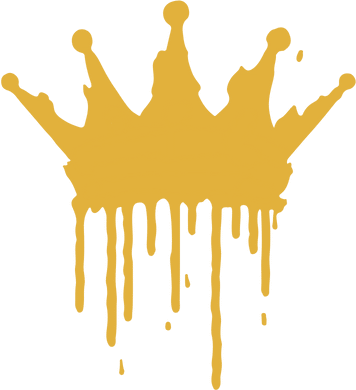 #
#
Gabrielle’s Ideals for Oval Diamonds #
(Table: 56–62% (59–61), Depth: 58–66% (62-66%), Pavilion Depth: 41–45% (43%), Pavilion Angle: 40–41° (40.2°–41.25°), Crown Angle: 33–37° (33.7°–35.8°), Crown Height: 12.5–15%, Girdle: 2.5–4.5%)
The oval cut diamond is a brilliant-cut shape that offers the sparkle of a round brilliant but in an elongated silhouette. Designed to maximize brilliance while appearing larger per carat than rounds, the oval cut is a favorite for those seeking elegance, finger coverage, and vintage charm.
The modern oval brilliant cut was developed in 1957 by Lazare Kaplan, a renowned diamond cutter who sought to create a shape with the same level of brilliance as a round but with an elongated, more distinctive appearance. Since its introduction, the oval cut has grown in popularity, offering a unique take on the traditional round brilliant while optimizing face-up size and sparkle.
Ovals face up significantly larger than round brilliants of the same carat weight, due to their elongated proportions. This means that a 1.50-carat oval can look closer in size to a 1.75–2.00 carat round, making it a great choice for those who want maximum presence without the price jump of larger carat sizes.
#
1. What Is an Oval Cut Diamond? #
Oval diamonds belong to the brilliant-cut family, meaning they are designed for maximum light performance. Their elongated shape offers a larger face-up appearance than a round of the same carat weight, making them an excellent choice for those who want size and brilliance.
Unlike rounds, ovals come in a variety of length-to-width ratios, ranging from slightly rounded to more elongated shapes. The ideal range is typically 1.35–1.50 for a well-balanced, proportionate look.
Why Choose an Oval Cut Diamond?
-
Larger Face-Up Size:
The elongated shape makes an oval appear larger per carat than a round diamond.
-
Classic Yet Unique:
Ovals provide the timelessness of a round but with a distinctive silhouette.
-
Brilliant Faceting:
The modified brilliant cut ensures high levels of sparkle and fire.
-
Finger-Flattering Shape:
The elongated form creates a lengthening effect on the fingers, making it a popular choice for engagement rings.
Potential Downsides of an Oval Diamond
-
Bow-Tie Effect:
Many ovals exhibit a dark shadow across the center, known as a bow tie. While some bowties are unavoidable, a well-cut oval minimizes this issue, and can actually add a lovely contrast to highlight the depth of the stone. We believe that bow ties are a feature, not a bug!
-
Proportion Sensitivity:
Achieving optimal brilliance requires careful attention to table, depth, pavilion angles, and symmetry. Poorly cut ovals may have dead spots or uneven light return.
-
Color Retention:
Ovals tend to trap color more in the rounded ends, meaning a lower color grade may appear warmer than expected.
-
Inclusion Visibility:
Because ovals have a large table, inclusions near the center can be more visible, making clarity selection important.
-
Inconsistent Shape Variations:
Shape consistency varies greatly since oval diamonds are not cut to a strict standard like rounds. Some may be more rounded or stretched, so selecting a well-proportioned, symmetrical oval is key.
 #
#
2. The 4Cs for an Oval Lab Diamond #
While the 4Cs—Cut, Color, Clarity, and Carat—are critical for every diamond, the cut is paramount for oval diamonds, as it directly influences their light performance and overall appearance.
Cut – The Heart of Oval Brilliance
Getting the cut right means dialing in those key proportions:
-
Table Percentage (IGI’s ideals: 56–62% | Gabrielle’s Ideals: 59–61%):
The table is the largest facet where light enters the diamond. Staying within this range ensures even light distribution, enhancing both fire and brilliance.
-
Depth Percentage (IGI’s ideals: 58–66% | Gabrielle’s Ideals: 62-66%):
Depth defines the stone’s overall height relative to its width. An optimal depth allows light to bounce efficiently within the diamond, maximizing sparkle.
-
Pavilion Depth (IGI’s ideals: 41–45% | Gabrielle’s Ideals: 43%):
The pavilion is where internal reflections occur. Proper pavilion depth directs light back through the crown, boosting the diamond’s overall brightness.
-
Pavilion Angle (IGI’s ideals: 40–41° | Gabrielle’s Ideals: 40.2°–41.25°):
This angle guides the light through the stone, balancing brilliance and scintillation.
-
Crown Angle (IGI’s ideals: 33–37° | Gabrielle’s Ideals: 33.7°–35.8°):
The crown angle disperses light into its colorful spectrum (fire) while maintaining overall brightness, ensuring the diamond shines with lively sparkle.
-
Crown Height (12.5–15%) & Girdle (2.5–4.5%):
These factors contribute to both the diamond’s durability and its visual appeal, ensuring that the stone withstands everyday wear while performing at its best.
Pro Tip: A slightly shallower depth with a balanced table and pavilion will help maximize brightness and apparent size while minimizing the bow-tie effect.
Color – Enhancing the Icy Sparkle
Oval diamonds are cut to reveal a bright, white appearance. Choosing the right color grade enhances their inherent sparkle:
-
D–F (Colorless): Provides a pristine, icy-white look that maximizes brilliance.
-
G–H (Near Colorless): Offers an excellent balance between value and that sought-after white radiance.
-
I–J: May introduce a subtle warmth—ideal if you plan on setting your diamond in yellow or rose gold, which can complement and balance the tone.
Pro Tip: For settings in yellow or rose gold, an H–J color grade works well, as the metal helps mask any slight warmth.
Clarity – Focus on Structural Integrity
Lab diamonds generally feature fewer inclusions than natural stones. For oval diamonds, aim for eye-clean clarity to ensure nothing detracts from the stone’s luminous performance:
-
VS1–VS2: The sweet spot—providing excellent clarity and value without visible inclusions.
-
SI1–SI2: Acceptable if inclusions remain invisible to the naked eye.
-
VVS1–VVS2: Nearly flawless, though these stones come at a premium.
-
F–IF: Flawless diamonds exist but are generally unnecessary for most buyers.
Pro Tip: A VS1–VS2 clarity oval typically strikes the best balance between beauty and affordability.
Carat – More Size for Your Budget
Lab diamonds allow you to choose larger stones without sacrificing quality. However, a well-cut oval diamond with ideal proportions will always appear more brilliant than a slightly larger stone with inferior cut quality.
Pro Tip: Prioritize cut quality over carat size—a perfectly proportioned 1.50 ct oval can look larger and more dazzling than a poorly cut 1.75 ct stone.
3. Additional Considerations #
Symmetry & Polish
-
Symmetry: Excellent symmetry ensures the diamond reflects light evenly for an elegant, well-proportioned appearance.
-
Polish: Excellent or very good polish is the best choice to maximize the crispness and cleanliness of the facets.
Fluorescence
-
None or Faint fluorescence is ideal, as strong fluorescence can cause haziness in some diamonds.
Certification
-
Always buy IGI- or GIA-certified diamonds to ensure accurate grading.
Setting Considerations
-
Metal Choice:
-
Platinum/white gold enhances the icy brightness.
-
Yellow/rose gold softens the appearance and can complement lower color grades.
-
-
Best Settings:
-
Four- or six-prong solitaires showcase the oval’s shape.
-
Halo settings enhance perceived size and brilliance.
-
Bezel settings offer protection but may slightly reduce sparkle.
-
#
Final Thoughts #
A well-cut oval diamond is one of the most elegant and brilliant fancy shapes available. With superior finger coverage, timeless appeal, and exceptional sparkle, it’s an excellent choice for those who love brilliance with a modern twist.
By following Gabrielle’s Ideals, you can confidently select an oval cut diamond that is well-proportioned, high-performing, and visually stunning.
Happy diamond hunting—may your oval diamond shine with elegance, brilliance, and a touch of vintage charm!


